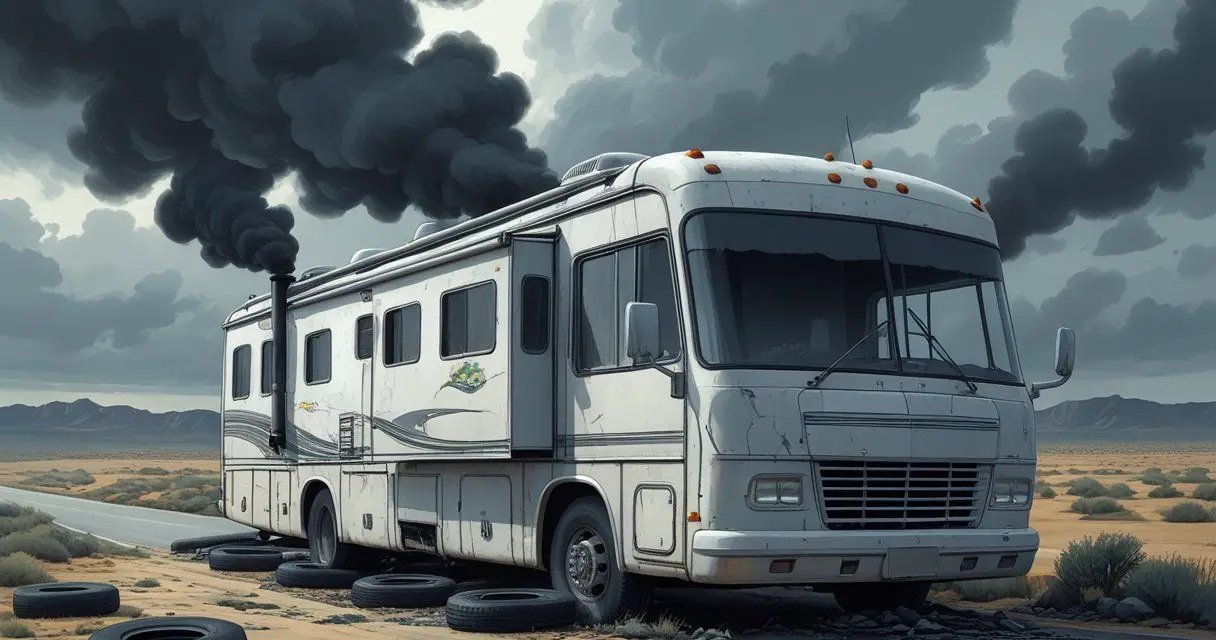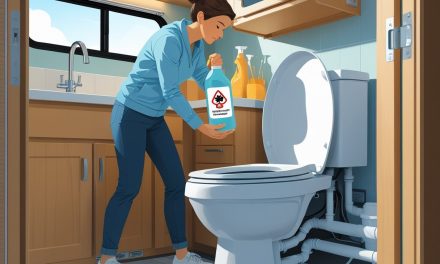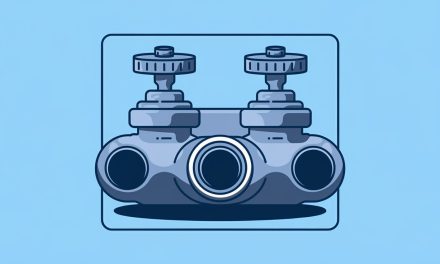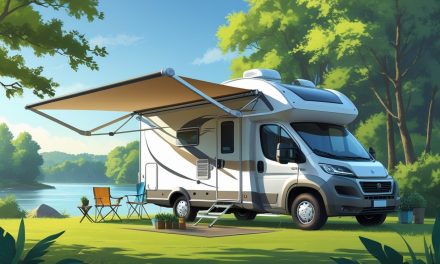Would you like to save this article?
You’ve finally decided to join the RV lifestyle, but sticker shock from new units has you browsing the used market faster than a kid running to an ice cream truck. Smart move! Used RVs can offer incredible value, but they can also hide expensive surprises that’ll make your wallet weep.
The harsh reality is that 72% of used RV buyers encounter unexpected repair costs within their first year of ownership, according to industry data. Before you hand over your hard-earned cash, you need to become a detective, inspector, and skeptic all rolled into one. This comprehensive guide will arm you with the knowledge to spot the red flags that separate a great deal from a rolling money pit.
1. The Listing: When “Barely Used” Really Means “Barely Usable”
Every used RV listing sounds like it was written by a master of creative fiction. “Only used twice!” typically translates to “It broke on the third trip.” When you see phrases like “sleeps six comfortably,” prepare for sardine-can living conditions where comfort is purely theoretical.
Supporting Facts:
- 85% of used RV listings contain misleading descriptions about usage frequency
- The phrase “needs minor TLC” appears in 1 out of every 3 problematic RV sales
- Average cost to fix “minor” issues: $3,500-$8,000
Your Reality Check:
You’re probably reading between the lines already, wondering if that “garage-kept gem” was actually parked next to a leaking oil drum for three winters. Trust your instincts – if the description sounds too good to be true, it usually comes with a side of expensive repairs.
2. The Walk-Around: Your First Line of Defense
Before you even peek inside, take a slow lap around the exterior. This isn’t a casual stroll – you’re conducting a forensic investigation. Look for gaps in seals, bulges in siding, and caulking that looks like it was applied by someone wearing oven mitts.
Supporting Facts:
- Water damage accounts for 60% of major RV insurance claims
- Structural issues are found in 1 out of every 4 used RVs over 10 years old
- Exterior seal failures lead to average repair costs of $12,000
| What to Check | Red Flag Signs | Average Repair Cost |
|---|---|---|
| Corner seals | Gaps, cracking, discoloration | $2,500-$5,000 |
| Siding | Bulges, soft spots, delamination | $8,000-$15,000 |
| Tires | Age over 5 years, uneven wear | $800-$2,400 |
Your Reality Check:
You might feel like you’re being overly picky, but remember – every exterior flaw is a potential wallet-drainer waiting to happen. That innocent-looking crack could be the tip of a very expensive iceberg.
3. The Smell Test: Your Nose Knows When Something’s Wrong
The moment you open that RV door, take a deep breath. If you’re hit with an avalanche of air fresheners, someone’s definitely hiding something. Nobody needs four plug-ins for 200 square feet unless they’re covering up eau de mold or eau de mystery leak.
Supporting Facts:
- Mold remediation in RVs averages $15,000-$25,000
- Hidden water damage is present in 40% of used RV sales
- Professional odor removal costs $500-$2,000
Your Reality Check:
You’re not being paranoid if that “fresh cabin scent” smells suspiciously like someone dumped a bottle of Pine-Sol over a swamp. Real clean RVs smell like… nothing. Anything else is probably masking a problem you don’t want to inherit.
4. The Touch Test: When Pressing Buttons Reveals Pressing Problems
Time to get handsy with your potential purchase. Press on ceilings, floors, and walls like you’re trying to find secret passages. If anything gives way more than it should, you’ve found your first major red flag.
Supporting Facts:
- Floor rot repairs average $5,000-$12,000
- Ceiling replacement can cost $8,000-$20,000
- Wall delamination affects 30% of RVs over 15 years old
Your Reality Check:
You might feel weird prodding someone else’s RV like you’re kneading bread dough, but soft spots equal expensive spots. That squishy floor near the bathroom isn’t a comfort feature – it’s a structural nightmare in disguise.
5. Appliance Roulette: When Your Fridge Becomes Your Biggest Gamble
Turn everything on – and we mean everything. The refrigerator should work on both electric and propane. If it only runs on shore power, you’re already looking at a $1,500+ repair bill before you’ve even made your first s’more.
Supporting Facts:
- RV refrigerator replacement costs $2,000-$4,500
- Propane system failures average $800-$2,200 to fix
- Water system problems affect 50% of used RVs
Your Reality Check:
You’re probably hoping that one burner that won’t light is just a quirky personality trait, but in RV-speak, “quirky” usually means “expensive to fix.” Every non-functioning appliance is a negotiation point or a reason to walk away.
6. Ceiling Investigation: Where Water Damage Likes to Hide
Most buyers get distracted by fancy cabinet hardware and forget to look up. The ceiling is where water damage sets up camp and throws house parties. Stains, bubbles, and mismatched panels are all signs of a roof that’s been leaking longer than a government secret.
Supporting Facts:
- Roof leaks are responsible for 80% of RV water damage
- Complete roof replacement costs $15,000-$30,000
- Hidden ceiling damage adds an average of $8,500 to repair bills
Your Reality Check:
You might be thinking that little brown spot looks innocent enough, but ceiling stains are like icebergs – what you see is just the beginning. That “small” water mark could be hiding thousands of dollars in structural damage.
7. Electrical Systems: Avoiding the Spark of Financial Disaster
RV electrical systems are designed to power your essentials, assuming you use them one at a time and never simultaneously. Turn on all the lights, AC, fridge, and plug in a device. If anything flickers, dims, or starts humming ominously, you’ve found your next expensive project.
Supporting Facts:
- Electrical system overhauls cost $3,000-$8,000
- Fire damage from electrical issues affects 2% of RVs annually
- Faulty wiring is found in 25% of RVs over 20 years old
Your Reality Check:
You’re probably telling yourself that flickering lights add character, but in the RV world, character equals fire hazard. When your electrical system can’t handle making coffee and charging your phone simultaneously, you’ve got problems.
8. Slide-Out Shenanigans: When Convenience Becomes a Costly Commitment
Slide-outs are awesome until they break, then you’re driving around with part of your living room hanging out like a broken wing. Test it multiple times – in and out, in and out. If it sounds like an arthritic elephant doing yoga, budget for repairs.
Supporting Facts:
- Slide-out motor replacement costs $2,500-$5,000
- Seal replacement averages $1,200-$3,000
- Water damage from failed slide seals can exceed $20,000
Your Reality Check:
You’re probably buying into the seller’s story that “we never used the slide-out,” but nobody spends extra money on a feature they never planned to use. If it’s not working, there’s a reason – and that reason usually starts with dollar signs.
9. Test Drive Truths: When the Road Reveals Real Problems
If you’re buying a motorhome, actually drive the thing. Don’t accept “we drove it last week” as proof of roadworthiness. Cold start it, listen to the engine, and take it for a real test drive. If the steering has more play than a daycare center, you’re looking at suspension issues.
Supporting Facts:
- Transmission repairs on RVs average $8,000-$15,000
- Suspension problems cost $3,000-$7,000 to fix
- Brake system overhauls run $2,500-$5,500
Your Reality Check:
You might notice the seller getting nervous when you hit highway speeds, and that’s your cue to pay attention. Their anxiety isn’t about letting a stranger drive – it’s about you discovering what they already know is wrong.
10. The Roof: The Final Frontier of RV Inspection
Get up there with a ladder – no excuses. The roof is where every RV problem either starts, ends, or lives permanently. Check for cracked sealant, soft spots, and ponding water areas. If the seller says they “haven’t been up there in a while,” that’s code for “nobody has maintained this thing.”
Supporting Facts:
- Roof maintenance prevents 90% of water damage issues
- Complete roof restoration costs $10,000-$25,000
- Neglected roofs lose structural integrity within 3-5 years
| Roof Problem | Warning Signs | Repair Cost Range |
|---|---|---|
| Cracked sealant | Dry, flaking caulk | $2,000-$5,000 |
| Soft spots | Spongy walking surface | $8,000-$20,000 |
| Ponding water | Low spots, sagging | $15,000-$30,000 |
Your Reality Check:
You’re buying what this RV was like during its worst moments, not its current showroom condition. That roof has stories to tell, and most of them involve water going where it shouldn’t.
The Bottom Line: Your Used RV Buying Strategy
When you’re shopping for a used RV, you’re not just buying a recreational vehicle – you’re buying someone else’s maintenance history (or lack thereof). The key to success is being picky, annoying, and suspicious of everyone involved in the sale.
Remember: Good used RVs exist, but they’re hiding among a sea of weekend projects held together with duct tape and optimism. Show up with a flashlight, a checklist, and a healthy distrust of everything you’re told. Your future self will thank you when you’re enjoying the open road instead of waiting for a tow truck.
The difference between a great RV purchase and a financial disaster often comes down to spending an extra hour on inspection. That hour could save you $20,000 in repairs – making it the best-paid hour of your life.
SOURCES:
- Bish’s RV – 10 Red Flags When Purchasing Used RVs
- RV Travel – Flood Damaged RVs Warning
- RV Share – Used RV Buying Guide
- NRVIA – How to Avoid RV Water Damage
- Downtown Autobody – Used RV Statistics
- Mortons on the Move – RV Tire Lifespan
- RV Share – RV Tire Replacement Guide
- Continental AG – RV Tire Safety
- The Camping Loop YouTube Channel





